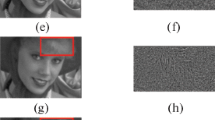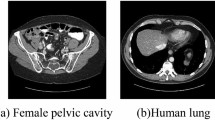Abstract
A novel and fast nonlocal mean (NLM) image denoising method using a structure tensor for Gaussian noise removal is proposed in this paper to address the difficult problem of the high computing cost of similarity weights. This method uses visual features based on fuzzy theory to measure the similarity between image pixels. First, from grayscale values and structure information in image patches, the similarity index measure is constructed by using a fuzzy theory measure. Then, the structure tensor is used to eliminate a large number of pixels of low similarity by the similarity index of the visual feature, which can improve the operation speed and avoid the filter parameters. Finally, NLM with a structure tensor and the similarity measure of fuzzy metrics is used to denoise the image. Due to the improved method considering the characteristics of the image visual structure, the structural similarity of NLM is improved. Compared with other improved NLM methods, the improved method in this paper has higher performance in denoising and reduces the complexity of the similarity computation and the problem of parameter setting.





Similar content being viewed by others
References
Buades A, Coll B, Morel JM (2010) A review of image denoising algorithms, with a new one. Siam J Multiscale Model Simul 4(2):490–530
Ghosh S, Chaudhuri KN (2016) Fast separable non-local means. J Electron Imaging 25(2):23–26
Bhujle H, Vadavadagi BH, Galaveen S (2018) Efficient non-local means denoising for image sequences with dimensionality reduction. Multimed Tools Appl 77(1):1–19
Hu J, Pu Y, Yi Z, Jiliu AZ (2012) Nonlocal means denoising algorithm based on DCT subspace. J Comput Aided Des Comput Gr 24(1):89–96
Zhang Z, Wang RS (2011) Fast nonlocal-means image denoising method based on Walsh–Hadamard projection. J Astronaut 32(2):380–387
Bhujle H, Chaudhuri S (2014) Novel speed-up strategies for NLM denoising with patch and edge patch based dictionaries. IEEE Trans Image Process 23(1):356–365
Zhang L, Dong W, Zhang D, Shi G (2010) Two-stage image denoising by principal component analysis with local pixel grouping. Pattern Recogn 43(4):1531–1549
Nguyen MP, Chun SY (2017) Bounded self-weights estimation method for non-local means image denoising using minimax estimators. IEEE Trans Image Process 26(4):1637–1649
Savaresi SM, Boley D (2004) A comparative analysis on the bisecting K-means and the PDDP clustering algorithms[J]. Intelligent data analysis 8(4):345–362
Kalra GS, Singh S (2016) Efficient digital image denoising for gray scale images. J Multimed Tools Appl 75(8):4467–4484
Gregori V, Morillas S, Sapena A (2009) Examples of fuzzy metrics and applications. Fuzzy Sets Syst 170(1):95–111
Chen X, Kang SB, Yang J, Yu J (2013) Fast patch-based denoising using approximated patch geodesic paths. Comput Vis Pattern Recognit 9(1):1211–1218
Wang Y, Yao H, Zhao S (2016) Auto-encoder based dimensionality reduction. Neurocomputing 184(C):232–242
Dabov K, Foi A, Katkovnik V et al (2007) Image denoising by sparse 3-D transform-domain collaborative filtering. IEEE Trans Image Process 16(8):2080–2095
Wang XY, Liu YC, Zhang N, Wu CJ, Yang HY (2015) An edge preserving adaptive image Denoising. J Multimed Tools Appl 74(24):11703–11720
Wang Z, Bovik AC, Sheikh HR, Simoncelli EP (2004) Image quality assessment: from error visibility to structural similarity. IEEE Trans Image Process 13(4):600–612
Acknowledgements
This research was partially supported from Sichuan Education Department Scientific Research Project (15ZB0425).
Author information
Authors and Affiliations
Corresponding author
Rights and permissions
About this article
Cite this article
Bo, L., Lv, J., Luo, X. et al. A novel and fast nonlocal means denoising algorithm using a structure tensor. J Supercomput 75, 770–782 (2019). https://doi.org/10.1007/s11227-018-2611-3
Published:
Issue Date:
DOI: https://doi.org/10.1007/s11227-018-2611-3




